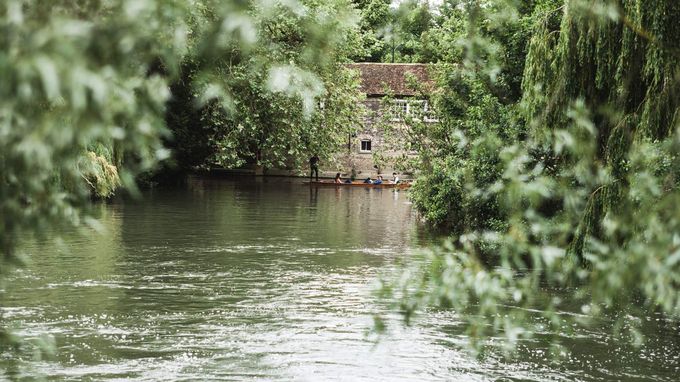The water industry and social value

The way in which each water company delivers social value varies and reflects the priorities of the local community
The water industry provides a vital public service by supplying clean water and managing wastewater. It is also particularly well placed to play a broader role in tackling wider social and environmental challenges because water companies work in specific geographic areas and are embedded in local communities. There is also strong collaboration and knowledge sharing across the sector.
Water UK, which represents water and wastewater companies across England, Wales, Scotland and Northern Ireland and facilitates some of this knowledge sharing, says: “Our ambition for the sector is to represent the best in responsible business practice. That means going beyond just regulatory compliance to demonstrate long-term stewardship of the environment, delivering social good and giving people a meaningful say as we decide our priorities.”
The UK’s water companies have signed up to a Public Interest Commitment under which they pledge to:
- Triple the rate of sector-wide leakage reduction by 2030
- Make bills affordable as a minimum for all households, with water and sewerage bills being no more than 5% of disposable income by 2030, and develop a strategy to end water poverty
- Achieve net-zero carbon emissions for the sector by 2030
- Prevent the equivalent of 4 billion plastic bottles ending up as waste by 2030
- Become the first sector to achieve 100% commitment to the Social Mobility Pledge
The way in which each water company delivers social value varies and reflects the priorities of the local community. Many have embedded social value in their core business purpose and decision-making processes. For example, Severn Trent Water has joined the socially focused Purposeful Company scheme, Anglian Water has become the first UK water company to legally embed a public interest commitment in its business, and Yorkshire Water is using the Six Capitals concept to inform all decision-making, from investment to land management.
Flood alleviation programmes also offer opportunities not only to focus on cost-effective technical solutions but also to consider wider potential social benefits such as regeneration, community cohesion, and health and wellbeing.
In 2019, the Environment Agency, which delivers many of the UK’s flood protection projects, launched its Next Generation Supplier Arrangements. These aim to ensure that sustainable development is at the core of future projects by promoting collaborative working with delivery partners and local communities from the initial planning stages of a project through to completion.
Anglian Water in Wisbech, Cambridgeshire
For more than seven years, Anglian Water and its @One Alliance partners have been working to make a lasting difference to the market town of Wisbech. Located only 40 miles (64 km) from Cambridge, the town has lower life expectancy than its larger neighbour, low social mobility, high reliance on public transport and poor connectivity with the rail network. At the same time, it has huge potential for growth and development.
Anglian Water chief executive Peter Simpson says: “There is a real opportunity for businesses to recognise their role in broader society and the part they can play in supporting the communities they serve. We wanted to explore, alongside our alliance partners, whether we could create sustained, positive impacts in an area that was facing real challenges.”
In its Guide to Community Regeneration in Wisbech, the company shares more about its approach. Its involvement in the community was developed around three main areas: community support, education and skills.
The work has resulted in a vision that grew from grassroots community work into a proposal for a new garden town with 10,000 homes, together with better transport links, more jobs and improved health, education and skills training for local people.
Anglian Water recommends the following steps for other organisations wanting to improve the social value of their work:
- Immerse your organisation in the local community, ask questions and – most importantly – listen. Through this, you will create strong, trusting relationships where all parties are treated equally.
- Understand the current situation and challenges. Hearing this from local people will help your organisation to understand what is going on and create emotional investment from key stakeholders. This is extremely useful when moving things forward.
- Be honest from the beginning about what you can offer as an organisation and what you cannot. This will help you to gain the respect of the local community and local stakeholders.
- Understand your organisation's long-term vision. Can you find connections between your business strategy and supporting community change? This will help you to move from quick wins to long-term change.
- Look out for opportunities, both short-term and ongoing, to advance the long-term vision. Build on what is already being done.
- Be prepared to invest time. The changes that will have the biggest impact over time will require long-term investment and might not be measurable in the short term.

A street in Wisbech, 2022. Credit: David Howard
Thames Tideway, London
The Thames Tideway Tunnel is a 25km sewer from east to west London designed to prevent millions of tonnes of sewage from spilling into the River Thames every year.
In addition to achieving this primary purpose, Tideway, the company that is financing and building the tunnel, has a vision to “reconnect London with the river”. To this end, it has established a legacy programme that sets out the wider benefits it intends to deliver both during construction and once the project is complete.
The legacy strategy contains 54 commitments across five themes: environment; health, safety and wellbeing; economy; people; and place.
Tideway has developed a Sustainable Financing Framework that links performance against these legacy commitments to the cost of financing. It has also embedded the commitments into its procurement processes and contracts.
Social value initiatives include:
- A target of 90% of tunnel spoil (about 4.2M.t) to be transported by river, reducing lorry movements on London’s roads
- Signing up to the Ethical Labour Sourcing Standard developed by the Building Research Establishment (BRE), a centre of building science
- Focusing on local employment, including employing ex-offenders, providing apprenticeships and offering comprehensive work placements
- Establishing Active Row, a partnership with London Youth Rowing, which aims to get young people active through rowing and focuses on gender equality and engaging young people from minority backgrounds
- Volunteering days, which include collecting discarded plastic bottles from the Thames

Construction of Thames Tideway at Blackfriars Bridge, 2015. Credit: iStock.com/silkfactory
Northumbrian Water's Rainwise programme
Northumbrian Water is working with communities and partners to manage the amount of surface water from roofs, roads and other hard surfaces that enters the sewer network, to reduce the risk of flooding to homes and businesses. The programme, called Rainwise, focuses on installing sustainable drainage systems (SuDS) where possible, to provide additional benefits including:
- Wildlife habitats
- Green spaces for people in urban areas
- Improved quality of surface water entering rivers and streams
- Reducing local temperatures on very hot days
One of the Rainwise projects is at Fellgate Estate, a residential area of 1,240 properties in Jarrow, South Tyneside. The estate had a history of flooding and suffered extensively in 2012, with 175 properties affected. The risk management authorities (Northumbrian Water, South Tyneside Council and the Environment Agency) wanted to maximise the social, environmental and financial benefits of the scheme so opted for surface water management options rather than a traditional below-ground tank storage system.
The solution involved:
- Purchasing farmland beyond the estate to create surface water attenuation areas
- Using open space in the estate to create surface water attenuation areas, including wet ponds in the grounds of two schools
- Upsizing public sewers and introducing flow control measures
- Disconnecting land drainage and a culverted watercourse from the public sewer and redirecting it to an existing open watercourse
Swales and channels have also been installed throughout the estate to intercept and redirect surface water run-off away from buildings and into the storage basins.
In addition to reducing the risk of flooding, the new features promote habitat creation and improve biodiversity. This includes new trees, hedges and planting around the detention basins, as well as a wild flora and grass mix on the sides and bases. The two wet ponds built on school playing fields will develop habitats that provide long-term educational opportunities to both schools for many years.
Ripon flood alleviation scheme, Yorkshire
Ripon in North Yorkshire is at risk of flooding owing to the convergence of three rivers: the Laver, Skell and Ure. Construction of a flood alleviation scheme started in 2009 and was completed in 2012, with the aim of protecting more than 500 residential and commercial properties from a one-in-100-year flood event.
The scheme includes elements such as an 8.6m-high flood embankment north of Ripon to create a storage area when the River Laver is flooding, and flood walls in the city itself.
In 2015, a study was undertaken to identify how the social value of the scheme was perceived and discussed, both by the local community and by those responsible for delivering it. The findings were:
- The majority of participants, both from the local community and engineers, perceived the main social value to be an improvement in quality of life, in the form of reduced stress and anxiety afforded by protection from the scheme.
- Residents identified the social value of recreational and aesthetic improvements to the river frontage, ranging from scheme-specific interventions (e.g. a new path alongside the river) to community-wide benefits.
- Both industry and local community respondents identified economic benefits, such as perceptions of increased economic prosperity as a result of the better level of protection, stabilisation of property values, and benefits to the local economy and tourism.
- Those involved in delivery perceived that social value came from the community engagement process and the delivery of a successful scheme.
The study’s researchers concluded that there were multiple perceptions of social value among local community participants. There were also clear differences between local community and industry participants, with those involved in delivery putting “a far greater focus on quantifiable, process-led types of social value”.
The researchers warn that: “Until the processes that the industry uses in the decision-making process for flood alleviation schemes change, many aspects of social value will continue to be ignored. The focus on quantifiable outputs effectively excludes the consideration of the social value experienced by many residents in the communities affected by the scheme.
“Based on the findings of this study, it is recommended that these multiple perceptions of social value should be acknowledged, identified and acted upon at the feasibility stage of flood alleviation schemes.”

Ripon flood works, 2011. Credit: Steenbergs
London Borough of Enfield: Moore Brook Green Link
The Moore Brook is a ‘lost’ river in the highly urbanised area of Edmonton that was rediscovered during a local flood risk investigation. The catchment is subject to flash flooding and the river suffers from pollution.
The London Borough of Enfield has created two wetland schemes in the river catchment, Firs Farm and Pymmes Park Wetlands, which provide storage as well as amenity space for local residents and wildlife habitat. The wetlands also provide a natural mechanism for cleaning run-off water as it enters the river.
However, even with the wetlands in place, there is still a risk of surface water flooding. So the borough is creating rain gardens across the catchment to store surface water when required. This green infrastructure forms part of a wider package of measures to improve walking and cycling in the area, including the Moore Brook Green Link, a walking route from Firs Farm to Pymmes Park Wetlands that is lined with rain gardens.
The rain gardens provide additional benefits, with some being utilised as horizontal traffic calming measures and others to create new and better crossing points.

First Farm Wetlands and playing fields. Credit: Enfield Council
Sign up to receive news from ICE Knowledge direct to your inbox.






